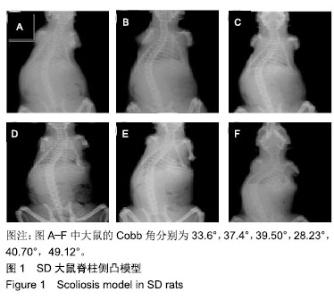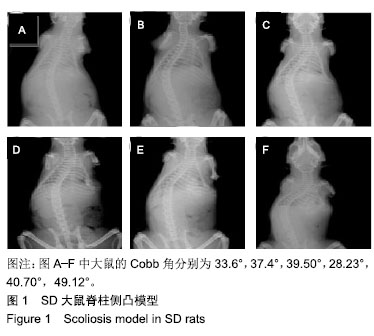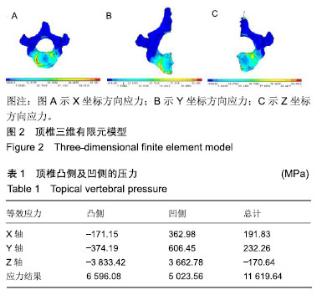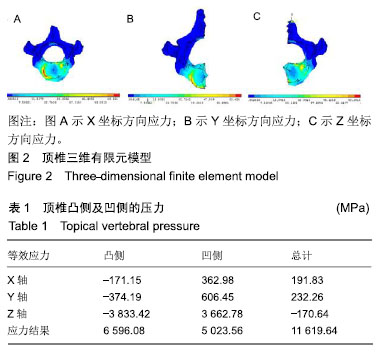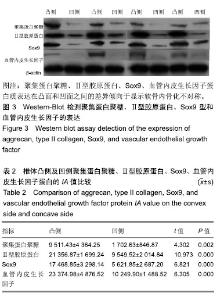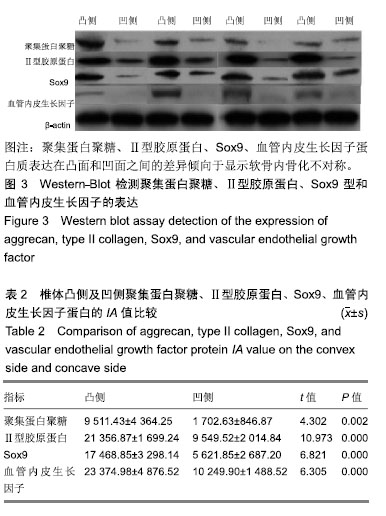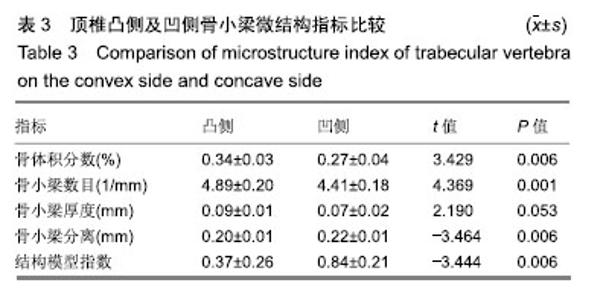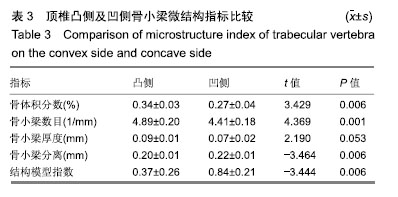| [1] |
Lu Dezhi, Mei Zhao, Li Xianglei, Wang Caiping, Sun Xin, Wang Xiaowen, Wang Jinwu.
Digital design and effect evaluation of three-dimensional printing scoliosis orthosis
[J]. Chinese Journal of Tissue Engineering Research, 2021, 25(9): 1329-1334.
|
| [2] |
Liang Yan, Zhao Yongfei, Xu Shuai, Zhu Zhenqi, Wang Kaifeng, Liu Haiying, Mao Keya.
Imaging evaluation of short-segment fixation and fusion for degenerative lumbar scoliosis assisted by highly selective nerve root block
[J]. Chinese Journal of Tissue Engineering Research, 2021, 25(9): 1423-1427.
|
| [3] |
Hou Jingying, Yu Menglei, Guo Tianzhu, Long Huibao, Wu Hao.
Hypoxia preconditioning promotes bone marrow mesenchymal stem cells survival and vascularization through the activation of HIF-1α/MALAT1/VEGFA pathway
[J]. Chinese Journal of Tissue Engineering Research, 2021, 25(7): 985-990.
|
| [4] |
Liang Yan, Zhao Yongfei, Zhu Zhenqi, Liu Haiying, Mao Keya.
Minimally invasive transforaminal lumbar interbody fusion in the treatment of sciatic scoliosis caused by lumbar disc herniation: a 2-year follow-up of coronal and sagittal balance
[J]. Chinese Journal of Tissue Engineering Research, 2021, 25(3): 409-413.
|
| [5] |
Zhou Chen, Xing Wenhua.
Application advantages of three-dimensional printing technology and finite element analysis in scoliosis correction
[J]. Chinese Journal of Tissue Engineering Research, 2021, 25(12): 1898-1903.
|
| [6] |
Liu Zhigang, Guo Qinggong, Chen Jingtao.
Effect of Capparis spinosa total alkaloid on proliferation and apoptosis of nucleus pulposus cells in an intervertebral disc degeneration rat model
[J]. Chinese Journal of Tissue Engineering Research, 2021, 25(11): 1699-1704.
|
| [7] |
Cheng Bingkun, Liang Jianfei, Qin Dongze, Cheng Zixu, Zhao Yunzhuan.
Isolation, culture and biological characteristics of high-purity orofacial-bone-derived mesenchymal stem cells of the rats
[J]. Chinese Journal of Tissue Engineering Research, 2021, 25(1): 67-72.
|
| [8] |
Zhang Cong, Zhao Yan, Du Xiaoyu, Du Xinrui, Pang Tingjuan, Fu Yining, Zhang Hao, Zhang Buzhou, Li Xiaohe, Wang Lidong.
Biomechanical analysis of the lumbar spine and pelvis in adolescent
idiopathic scoliosis with lumbar major curve
[J]. Chinese Journal of Tissue Engineering Research, 2020, 24(8): 1155-1161.
|
| [9] |
Cao Guolong, Tian Faming, Liu Jiayin.
Lovastatin combined with insulin effects on fracture healing
in rat models of bilateral ovariectomized type 2 diabetic mellitus
[J]. Chinese Journal of Tissue Engineering Research, 2020, 24(5): 673-681.
|
| [10] |
Wu Qi, Liao Ying, Sun Guanghua, Zhou Guijuan, Liao Yuan, Liu Jing, Zhong Peirui, Cheng Guo, Deng Chengyuan, Wang Tiantian.
Changes of subchondral bone in rat models of knee
osteoarthritis treated by elcatonin
[J]. Chinese Journal of Tissue Engineering Research, 2020, 24(5): 709-715.
|
| [11] |
Wang Jing, Lu Changfeng, Peng Jiang, Zhu Chen, Xu Wenjing, Cheng Xiaoqing, Fang Jie, Zhu Yaqiong, Zhao Yanxu, Jiang Wen, Xu Hongguang, Wang Yu.
Establishment and evaluation of traumatic neuroma model
[J]. Chinese Journal of Tissue Engineering Research, 2020, 24(5): 716-719.
|
| [12] |
Huo Shaochuan, Wang Haibin, Tang Hongyu, Wang Yueqi, Chen Qunqun, Feng Ziyu, Li Yikai.
Treatment of knee osteoarthritis by tonifying kidney and spleen and activating blood circulation herbs via chondrocyte IL-1beta/ERR-alpha/SOX9/Col2alpha1 signaling pathway in a rat model
[J]. Chinese Journal of Tissue Engineering Research, 2020, 24(35): 5577-5581.
|
| [13] |
Zhao Dezhu, Guan Tianmin, Wu Bin, Mei Zhao.
Design and implementation of an adolescent idiopathic scoliosis orthosis design expert system based on fuzzy logic
[J]. Chinese Journal of Tissue Engineering Research, 2020, 24(33): 5255-5261.
|
| [14] |
Xie Liuqin, Huang Zhicai, Wang Guangsu, Zhang Guoxing, Li-Du Chenhui, Li Xiao, Tang Zhenglong.
Effect of parathyroid hormone on cartilage healing in a rabbit model of mandibular condylar fracture
[J]. Chinese Journal of Tissue Engineering Research, 2020, 24(32): 5114-5121.
|
| [15] |
Xiao Lei, Hou Ligang.
Effect of glucosamine capsule on cartilage metabolism-related genes in peripheral blood mononuclear cells of patients with knee osteoarthritis
[J]. Chinese Journal of Tissue Engineering Research, 2020, 24(31): 5007-5012.
|
